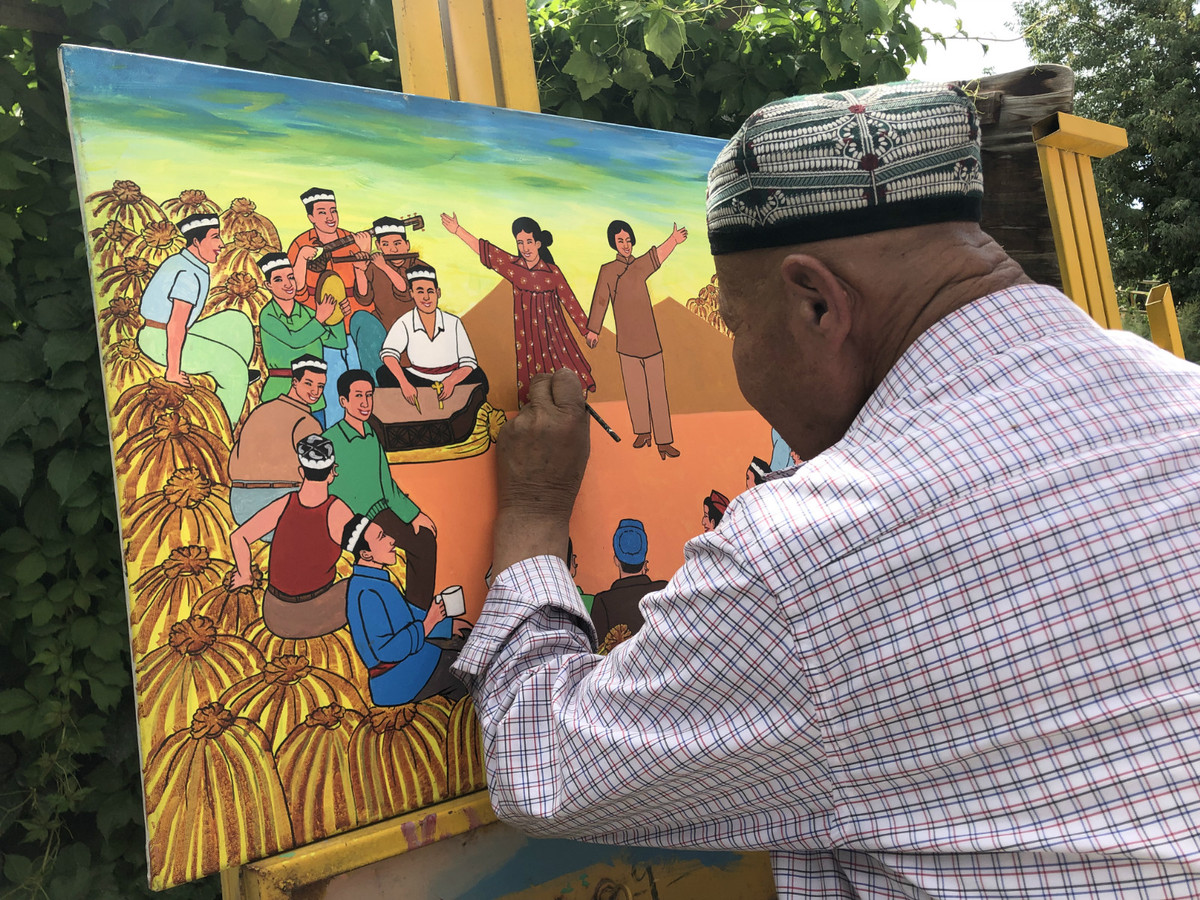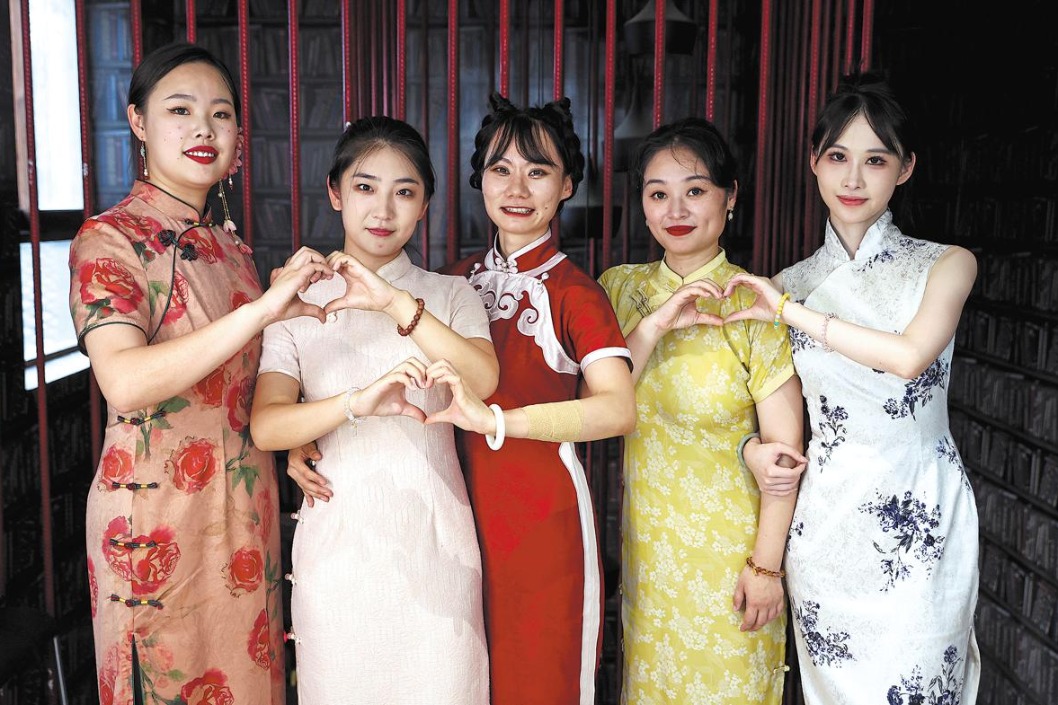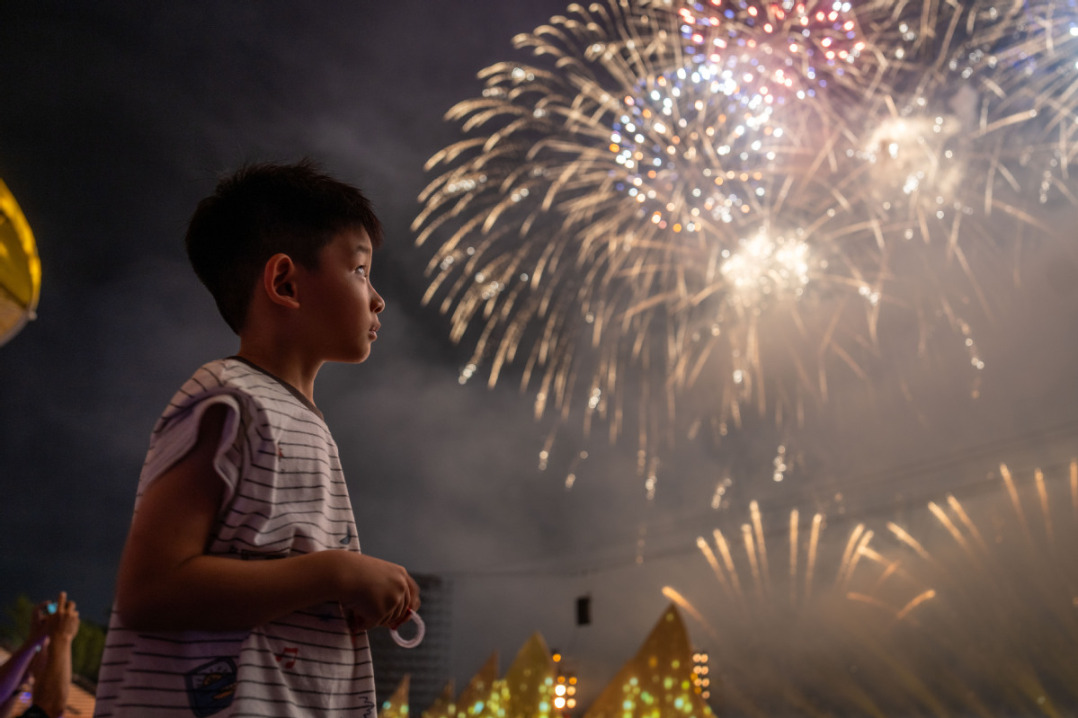Xinjiang's charm shines in rural paintings


When you visit Makit county, Kashgar prefecture of Xinjiang Uygur autonomous region, you will be dazzled by the paintings created by local farmers, who have received no professional training and been enriched by the local traditional culture.
Emerging in the 1960s, Dolan farmer painting, together with Dolan dance, Dolan bands and Dolan Muqam (a Kashgar folk song), forms what people call "the soul of Dolan" in Makit, an area west of the Tarim basin considered the birthplace of Dolan culture.
Dolan farmer painting arose because many farmers there were illiterate in the past, and had to record their lives and feelings through paintings. Passed on from generation to generation, the art form of farmer paintings took shape.
Dolan farmer paintings are all inspired by daily life, and the paintings reflect their lives in turn. The painters also have rich imaginations, so their artistic works use exaggerated techniques and unique concepts.
These paintings are popular among farmers and artists for their bold and bright colors. The creative medium is quite diverse. Oil, iron and calabash paintings as well as embroidery have all served to showcase the lives and spiritual worlds of Dolan farmers.
Currently there are nearly 100 renowned farmer painters in the county's kumkisar township, known as the Home of Farmer Painting, and 800 enthusiasts of the art form, including seniors over the age of 60 as well as children at school.
Up to now, the farmers here have created over 100,000 paintings, 2,800 of which have been exhibited at home and abroad. The Louvre Museum in Paris has collected four of the paintings.
























